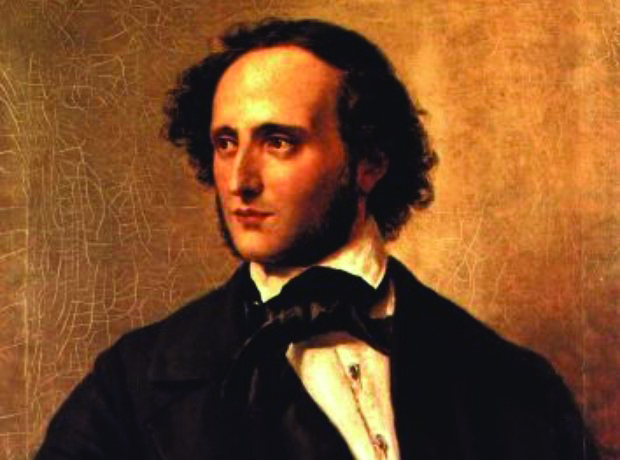ANDANTE AND ALLEGRO ASSAI VIVACE, FOR PIANO, FOUR-HANDS, OP. 92, MWV T4
Felix Mendelssohn
(b. Hamburg, Germany, February 3, 1809; d. Leipzig, November 4, 1847)
Composed 1841; 10 minutes
 On March 31, 1841, a landmark concert took place in Leipzig marking the first appearance together of the recently married Robert and Clara Schumann. Historians will also find it significant as the ‘world première’ of Schumann’s First Symphony, the Spring symphony, which Felix Mendelssohn conducted with his Gewandhaus Orchestra. Members of the orchestra would remember the event for the generosity of the young Clara Wieck Schumann, who was playing as a benefit for the orchestral pension fund. Leipzigers in the audience will also surely remember this same concert for a newly composed concert piano duet for the four hands of both Clara Wieck and Felix Mendelssohn – the Andante and Allegro assai vivace.
On March 31, 1841, a landmark concert took place in Leipzig marking the first appearance together of the recently married Robert and Clara Schumann. Historians will also find it significant as the ‘world première’ of Schumann’s First Symphony, the Spring symphony, which Felix Mendelssohn conducted with his Gewandhaus Orchestra. Members of the orchestra would remember the event for the generosity of the young Clara Wieck Schumann, who was playing as a benefit for the orchestral pension fund. Leipzigers in the audience will also surely remember this same concert for a newly composed concert piano duet for the four hands of both Clara Wieck and Felix Mendelssohn – the Andante and Allegro assai vivace.
Mendelssohn hastily composed the piece as the concert approached, dating two manuscript copies March 23 and 26, 1841. It says much about the pianistic skill of both musicians to have prepared the digitally demanding score (not to mention its intricate, overlapping arm and shoulder coordination) days before the concert. The piece opens with an elegantly melodic Andante in the spirit of one of Mendelssohn’s Songs Without Words, the two pianists here playing as one. The music then leans into a delightful Allegro in Mendelssohn’s featherlight scherzo idiom. This virtuoso score was written comparatively late in the composer’s short life, but, nonetheless, recreates the freshness and joie de vivre of his youthful Octet and A Midsummer Night’s Dream music. Its vivaciousness only slows for a brief echo of the Andante until whisked away into a witty coda. The score to this exuberant concert-opener was published posthumously four years after Mendelssohn’s death as the Allegro brilliant, without its pendant, the Andante. Surprisingly, the two were only reunited in print as recently as 1994, to the benefit of both.
